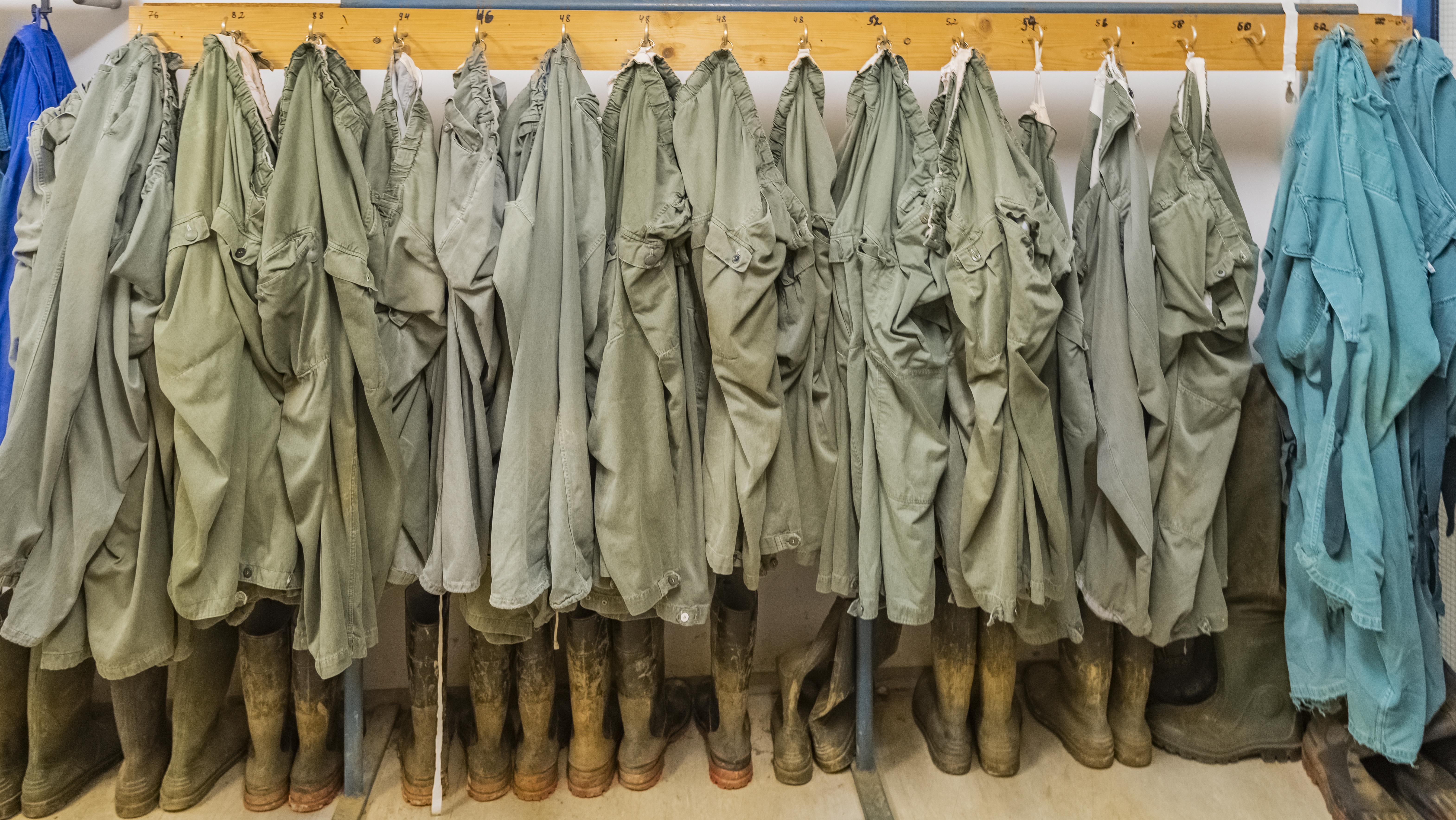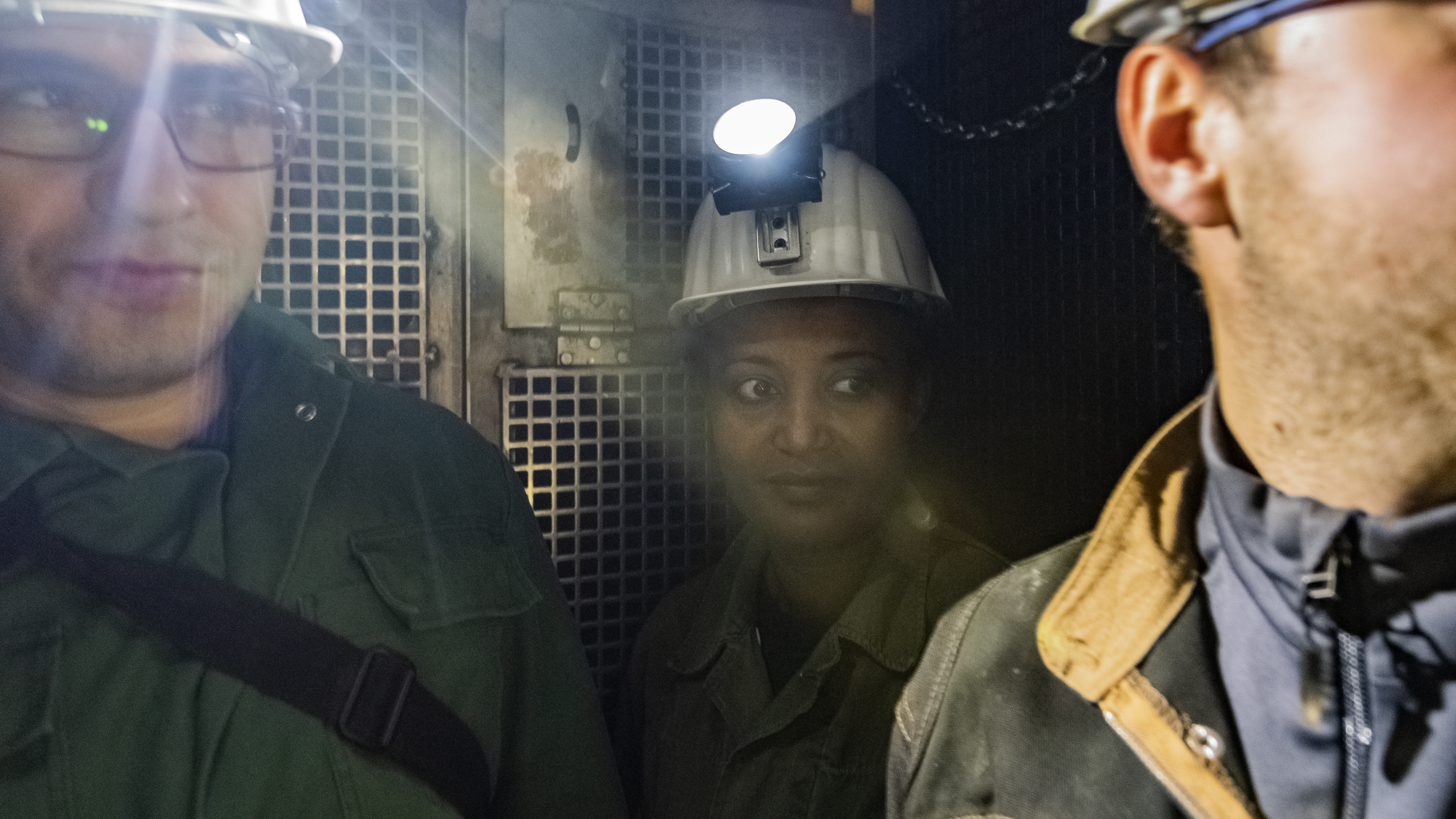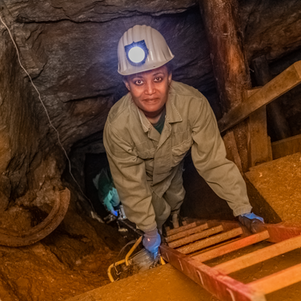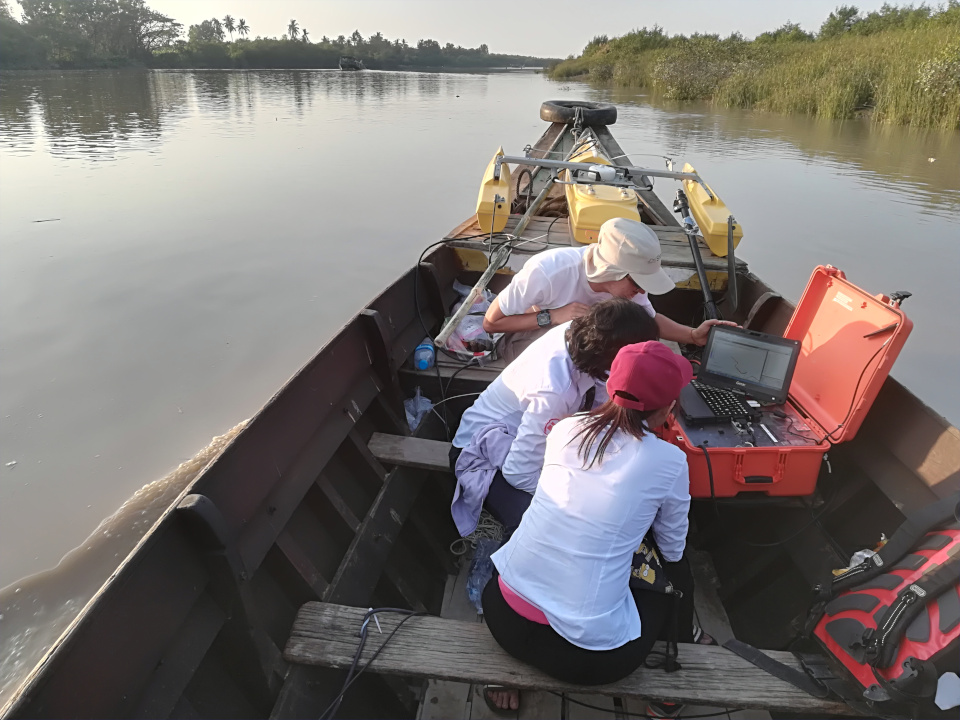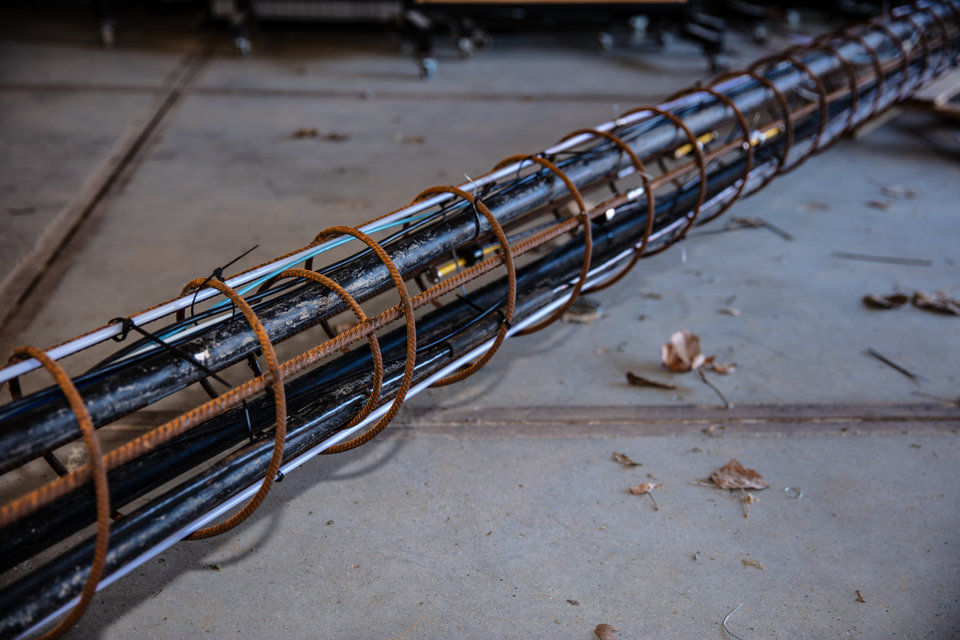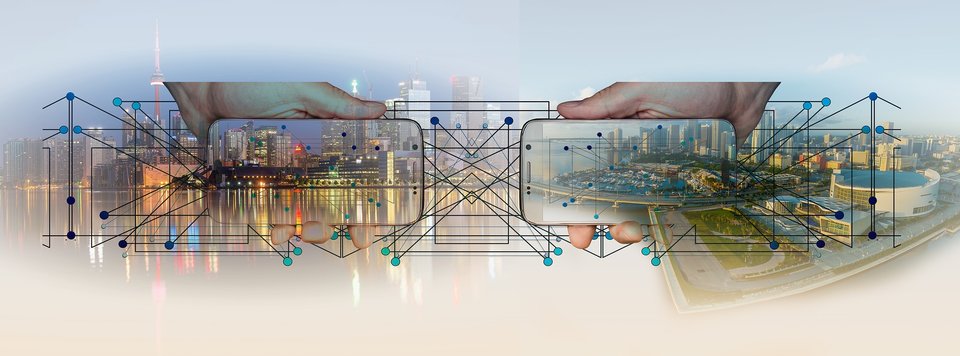Minerals are of great importance to our modern society. From smartphone to laptop, these elements are everywhere. First they need to be extracted from the earth however, an often environmentally taxing, slow and complex process. But this will change soon, if it’s up to PhD student Feven Desta. Desta researches sensor technologies to look for minerals in an environmentally friendly way.
Mineral samples
Desta studied geology and geo-environmental systems analysis in Ethiopia before coming to the Netherlands. This is why she has a special interest for the preservation of the environment within the field of geosciences. In her PhD research at TU Delft, she uses sensor technologies to give a material characterization of the minerals residing underground. To do so she takes samples from an existing mine to study in the lab. This was initially not the idea, but it turned out to be a challenge to take the technology down into the mine. “The infrared sensor is portable, but to take it underground it needs a protective shield so it will be more robust for dust, moisture and other environmental conditions in the mine. As a solution we took samples of the mine face and analyzed these above ground.”
Not with the naked eye
Once in the lab Desta measures different kinds of electromagnetic radiation on the samples, like infrared. Light is another example of electromagnetic radiation, this is the only kind we can see with the naked eye. In addition, Desta uses lasers and other techniques to measure different wave lengths of the electromagnetic spectrum which the human eye cannot perceive.
Every mineral is unique and has its own way to be analysed, Desta explains. “It is not so simple as to take a sample, use the technology and say: ‘oh here you have gold’ or ‘here you have zinc.’ Not all technologies work on all kinds of mineral deposits. The thing with sensor technologies is that they each get information on specific material properties. So you need to find the technology which is usable for your specific type of mineral deposit.” To get as much usable information as possible Desta also combines different sensor technologies and implements data fusion at the analysis stage in her research.
Less impact on the environment
By combining and analysing these different data types Desta can determine the characteristics and location of the minerals underground. With this information mining companies can make faster and better decisions on their course of action, without having to dig more than necessary. This greatly minimizes the environmental impact, which would constitute a revolution with regard to current mining practices. In addition, Desta’s measuring methods give other important information about what is exactly underground.
“We don’t just target the mineral which is of economic interest, like copper, lead or zinc. We also give information on hazardous materials present in the ground. For example, when there is also arsenic in the mine this can give serious health concerns when it releases into the air. The environmental impact that can come from that should always be taken into account.”
Going underground
Desta can also analyse what resides underground based on photographs. She tests this, and the other technologies, in a research mine in Freiberg. “We descend via a steep ladder with our camera, tripod and two halogen lamps to illuminate the face of the mine, cause it’s pitch black darkness down there. And also quite cold, approximately ten degrees Celsius.”
Simply taking photographs sounds straightforward, but everything that happens underground is tricky. To return with useful data, Desta and her colleagues need to work meticulously: “The mine face is twenty-two meters long and slightly more than a meter and a half wide. This means we cannot move very far from the mine face and can therefore only capture a small amount of space with every photograph. We also need to make sure the lighting stays exactly the same to ensure constant illumination and that there is at least forty percent overlap between pictures, so we can join them together afterwards.”
The future of mining
The demand for minerals is at an all-time high and current deposits are being depleted. This means that in the near future the industry will have to target geologically more complex contexts. This reality underlines the urgency of research such as the Real-Time Mining project.
As Desta concludes, “Everything around us is build up out of minerals, the buildings we work in, our phones, our daily lives are founded on minerals. So, we need minerals, we need extraction, and we need to do it environmentally friendly.”

